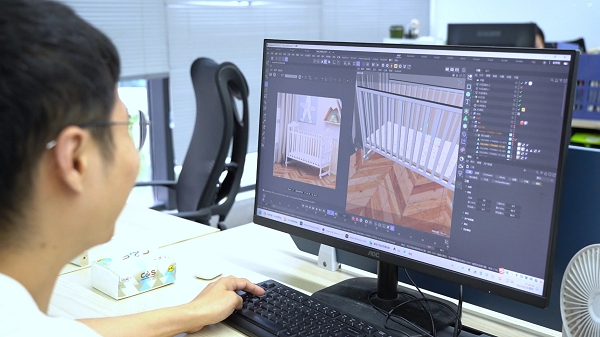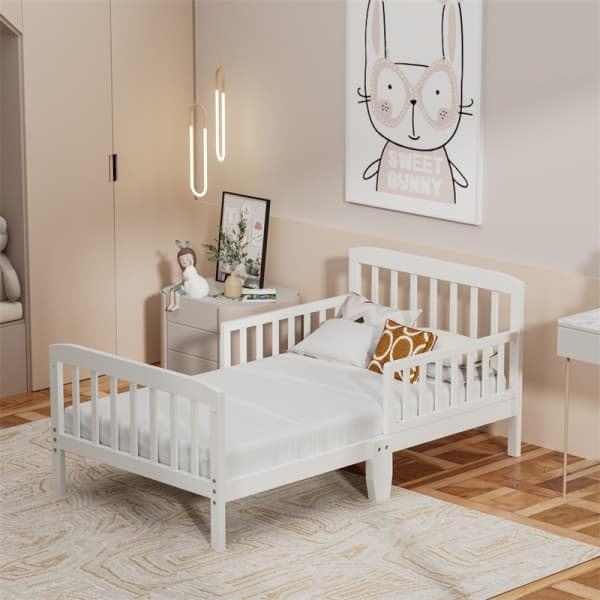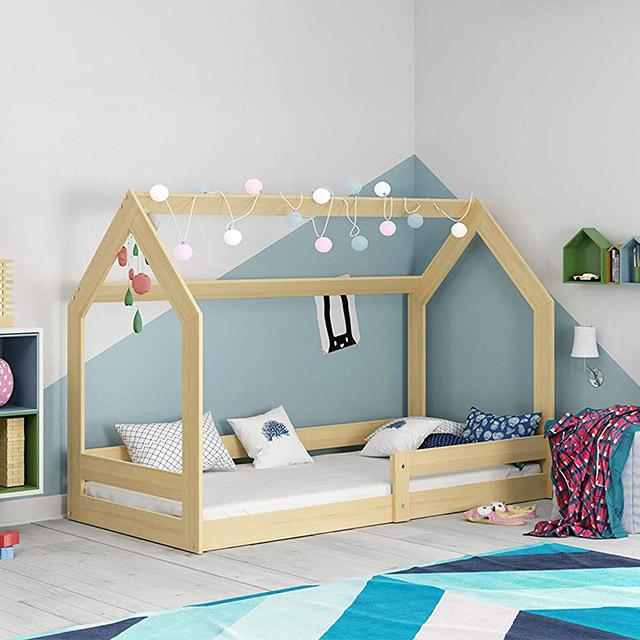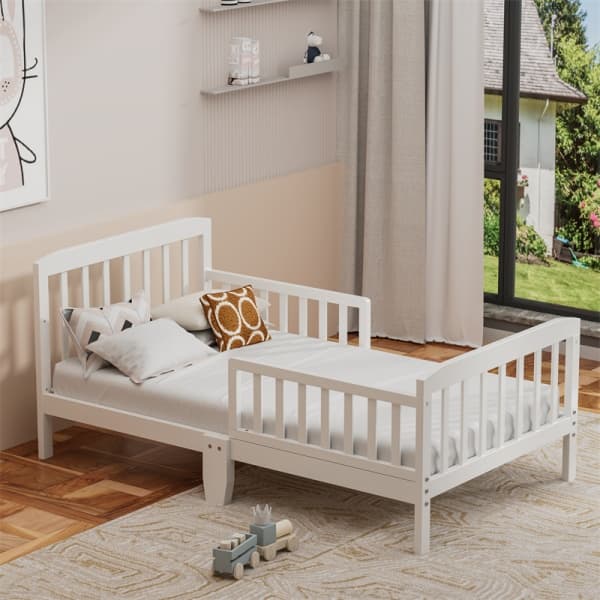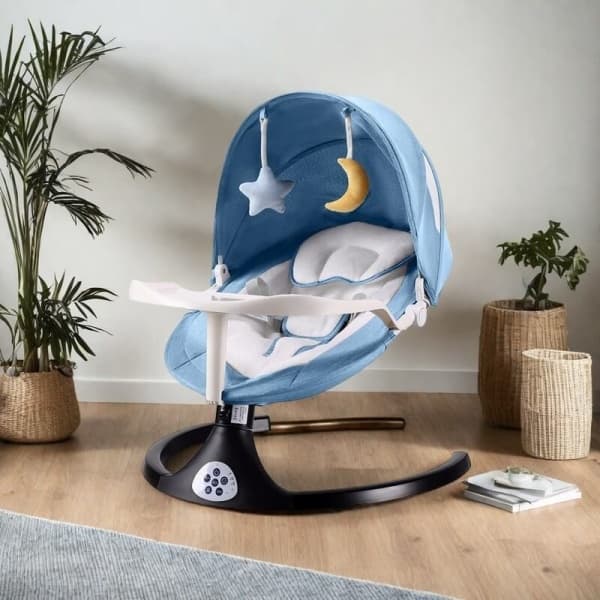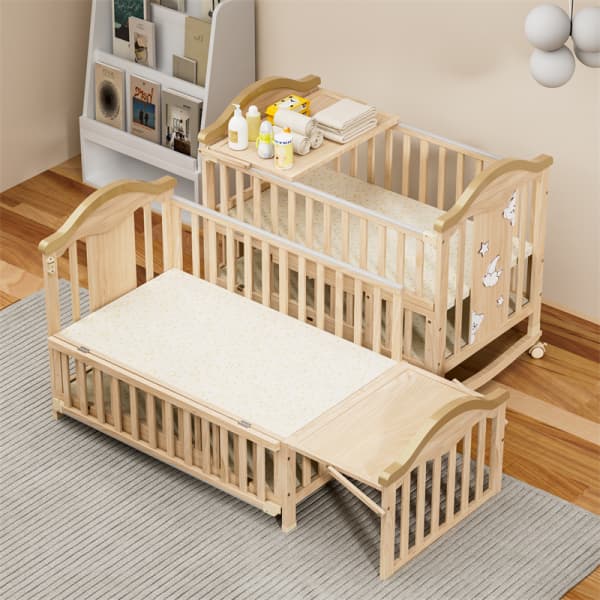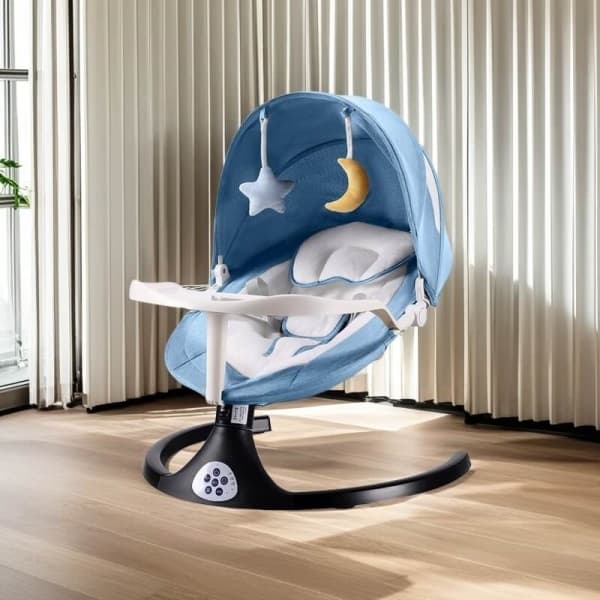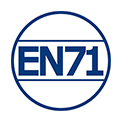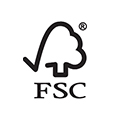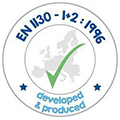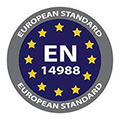Every year, thousands of children face injuries from poorly designed or unstable beds—whether due to falls, entrapment, or hidden dangers like toxic materials.
The line between a safe bed and a hazardous one often lies in something invisible: strict adherence to safety standards. These regulations aren’t just bureaucratic checkboxes—they’re lifesaving blueprints born from decades of research, real-world accidents, and tireless advocacy to protect children during their most vulnerable years.
This guide strips away the overwhelm, focusing on what truly matters for your child’s safety. You’ll learn to decode toddler bed certification labels, identify hidden risks in materials and design and make choices that blend practicality with unwavering peace of mind.
Key Safety Standards and Certifications for Toddler Beds
When shopping for a toddler bed, you’ll often see terms like “ASTM-certified” or “JPMA-approved” stamped on product descriptions. But what do these labels actually mean, and why should they matter to you?
The Gold Standard: ASTM F1821
In the U.S., ASTM International’s F1821 standard sets the safety playbook through decades of child behavior research. This isn’t a casual suggestion list—it’s a non-negotiable blueprint.
For instance, slat spacing can’t exceed 2.375 inches to prevent trapped limbs, while guardrails must rise at least 5 inches above mattresses—a critical barrier for sleep-rolling adventurers.
CPSC: The Legal Backbone
While ASTM standards are voluntary, the Consumer Product Safety Commission (CPSC) enforces law-backed safeguards. Their guidelines tackle hidden dangers like lead in paint (limited to 90 parts per million) and phthalates in plastics, which have been linked to developmental issues.
In 2022, the CPSC pulled 30+ risky children’s products from shelves—a sobering reminder that compliance isn’t optional.
The JPMA Seal of Approval
If you spot the Juvenile Products Manufacturers Association (JPMA) certification, it means the bed has passed third-party testing for ASTM and CPSC standards.
Think of it as a “double-check” system: JPMA doesn’t just take manufacturers at their word. They conduct independent lab tests to verify everything from structural stability to chemical safety.
Global Standards
For families outside the U.S., standards like Europe’s EN 716 or Australia’s AS/NZS 2172 play similar roles.
These often include additional requirements, such as stricter limits on formaldehyde emissions in materials. While not mandatory stateside, beds meeting these standards often signal extra layers of safety.
How to Spot a Safe Bed?
Always look for:
- A visible ASTM F1821 compliance label on the bed or packaging.
- The JPMA certification seal (a small gold-and-black emblem).
- A manufacturer’s certificate of conformity (available upon request).
Materials and Finishes
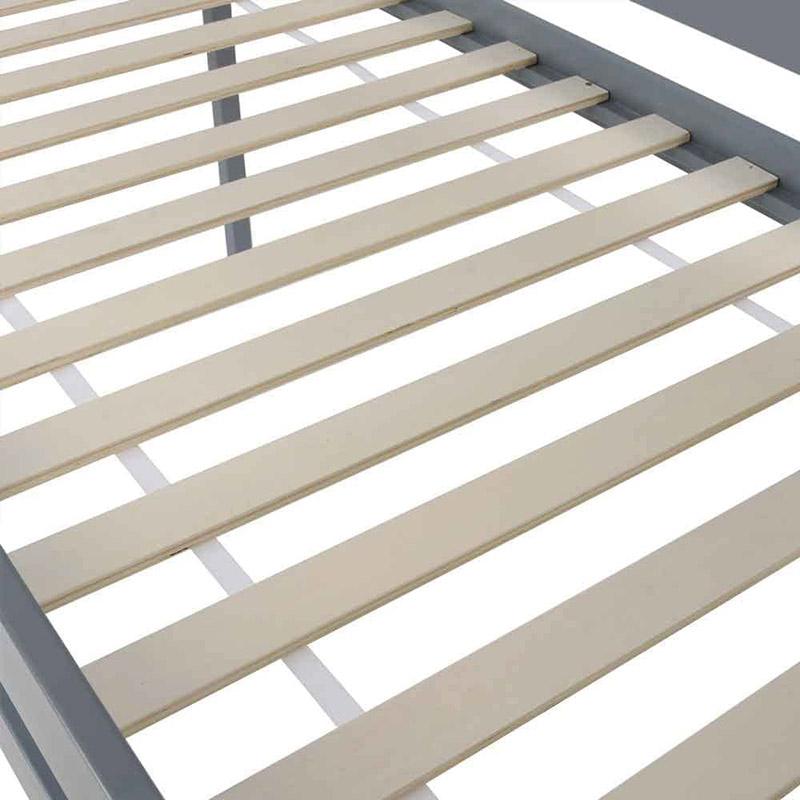
Children explore the world with their hands, mouths, and boundless curiosity—which means every surface they touch (or chew) should be free of hidden hazards.
High-quality toddler beds start with inert, stable materials. Solid hardwoods like maple أو birch earn top marks not just for durability but for staying silent. It is less likely to off-gas harmful chemicals compared to engineered woods like particleboard or MDF.
However, not all engineered materials are bad. Seek out those labeled “NAF” (No Added Formaldehyde) or compliant with California’s CARB Phase 2 standards—these limit formaldehyde to levels so low, you’d need a lab to detect them.
Metal frames, often made of powder-coated steel, are another safe option. The key is ensuring the coating is free of lead and phthalates—two substances restricted under the Consumer Product Safety Improvement Act (CPSIA). A quick tip: If a bed’s finish feels rough, smells strongly, or chips easily, it’s a red flag.
Vibrant colors might catch your toddler’s eye, but not all paints are created equal. Water-based, VOC-free finishes are the gold standard. VOCs (volatile organic compounds) are chemicals that evaporate at room temperature, potentially causing respiratory irritation or long-term health issues.
Avoid beds with glossy, lacquer-like finishes unless they’re explicitly labeled as child-safe. These often contain solvents or hardening agents that can leach toxins over time. Instead, opt for matte or satin finishes, which are typically gentler and more resistant to wear.
“All-natural” and “organic” labels can be wolves in sheep’s clothing. Untreated wood might sound earthy, but without proper sealing, it’s a splinter factory or mold magnet. Always prioritize third-party certifications over marketing buzzwords.
Guardrails and Fall Prevention
For parents transitioning their little ones to toddler beds, nighttime tumbles rank high on the worry list. While falls are a leading cause of injury for young children, they’re also largely preventable—and guardrails exist for this exact reason.
Toddlers spend nearly half their sleep time in motion—kicking, rolling, and even sleep-crawling. Guardrails act as a physical reminder of the bed’s boundaries, but their design is governed by strict safety standards.
But there’s a catch: rails that are too high can become climbing temptations, while those too low offer false security. The sweet spot? Rails should sit no lower than 5 inches and no higher than 9 inches above the mattress.
A secure guardrail isn’t just about height—it’s about structural integrity. Flimsy rails with weak joints or sharp edges can splinter, detach, or even pinch tiny fingers. Always check that rails are:
- Securely anchored to the bed frame with bolts (not just plastic clips or tension straps).
- Free of gaps between the rail and mattress where limbs could get trapped.
- Smooth and rounded to prevent scratches or abrasions.
Some beds feature adjustable or removable guardrails to accommodate growing toddlers. While convenient, these systems can introduce risks if not properly maintained. A rail that’s loosely reattached after washing sheets, for example, might wobble or collapse under pressure. If your bed has adjustable guardrails, pay close attention and check them regularly.
Structural Stability and Load Testing
Imagine your toddler’s bed as their personal playground—a stage for jumping, bouncing, and practicing gymnastic feats you never knew they could attempt. Although you may appreciate their energy sometimes, you have to admit that it is a test for the quality of the toddler bed.
Every reputable toddler bed undergoes static and dynamic load testing to simulate real-world use. Static testing involves placing weight equivalent to 3-4 times the bed’s maximum limit (usually around 150 pounds for a 50-pound-rated bed) on critical points like the mattress frame and guardrails.
Manufacturers don’t pull weight limits out of thin air. They’re calculated based on the bed’s weakest point, whether it’s the slats, joints, or fasteners. Exceeding these limits—even by a few pounds—can stress materials beyond their engineered capacity, leading to sudden failures. For context, the average 3-year-old weighs about 30-40 pounds, but many beds cap at 50 pounds to account for growth spurts and dynamic forces.
In 2020, the CPSC reported over 1,800 injuries linked to cribs and toddler beds, many due to structural failures like collapsing frames or detached rails. These numbers underscore why stability isn’t a feature to compromise on.
What’s the Safest Age to Switch to a Toddler Bed?

While most parents make the switch between 18 months and 3 years, the “right” age hinges on three key factors: safety, development, and necessity.
The #1 reason parents switch early? Escape artists. If your toddler can hoist themselves over the crib rail (even once), it’s time to move them—immediately. A 2021 study in Pediatrics found that crib-related injuries spike sharply once children exceed 35 inches in height, as they’re more likely to fall while attempting to climb out.
A child’s ability to follow basic rules matters more than their age. Can they:
Stay in bed after lights-out without panicking?
Understand simple instructions like “Don’t get up without Mommy”?
Navigate the bed’s height safely (typically 12–18 inches off the floor)?
If the answer is “no,” delaying the switch—even past age 3—is safer than risking midnight wanderings or falls.
Many pediatricians recommend waiting until age 2.5–3 if possible. By this stage, most children have the motor skills to climb in/out safely. They are less likely to treat the bed as a playground.
Should Toddler Beds Be Against the Wall?
Placing a toddler bed against the wall seems like a no-brainer—after all, it creates a cozy nook and feels safer. However, this common practice has hidden risks that many parents overlook. The truth? Bed placement is less about tradition and more about physics, airflow, and your child’s sleep habits.
When positioned flush against a wall, even a seemingly tight fit can leave a narrow gap between the mattress and wall. Toddlers often shift into tight spaces during sleep, and gaps exceeding 3 inches pose entrapment or suffocation risks, as noted by the CPSC. This concern is not theoretical: In 2019, toddler beds marketed as “wall-huggers” were recalled after reports of children becoming trapped in such gaps.
Toddlers’ climbing instincts also factor into placement. A bed against the wall may encourage using the wall as a step to reach shelves, windows, or furniture. If the room has low windows, built-in shelving, or climbable surfaces, position the bed at least 3 feet away from these features.
A toddler bed can be against the wall—but only if you meticulously eliminate gaps, anchor the frame, and monitor the environment. For most families, positioning the bed a few inches away from the wall (with rails on both sides) offers the best blend of safety and practicality.
Can I Use a Secondhand Toddler Bed?
Secondhand toddler beds can seem like a win-win: they’re affordable, sustainable, and often come with nostalgic charm. But beneath the surface, pre-owned beds may hide risks that could turn a bargain into a crisis.
The reality is that safety standards for children’s products have evolved dramatically in the past decade, and older beds—even those that appear pristine—often lack modern safeguards.
Over 11 million nursery products, including toddler beds, were recalled between 2010 and 2022 for safety violations. The problem? Many secondhand sellers (or well-meaning relatives) aren’t aware their bed was flagged.
Structural wear is another invisible danger. Years of use can weaken joints, warp slats, or strip screw holes, compromising stability. A bed that creaks when pressure is applied, has uneven mattress support, or wobbles during a simple shake test (grip the frame firmly and jiggle) is a red flag.
For parents committed to reusing a secondhand bed, strict vetting is essential. Prioritize beds made after 2011, when CPSIA reforms took full effect, and insist on original parts and assembly manuals. Test for lead using EPA-approved swabs, inspect for mold or pest damage, and consider professional reinforcement of weak joints.
خاتمة
This guide has explored every aspect of toddler bed safety, from understanding essential certifications like ASTM F1821 and JPMA to evaluating materials, designs, and potential risks of secondhand options.
Every component—from precise slat spacing to thoughtful room placement—contributes to protecting your child during their curious early years.
Safety requires consistent attention. Routinely check for loose hardware, monitor weight limits, and adjust the sleep space as your child grows. These practices ensure ongoing protection while maintaining a secure sleeping environment.

